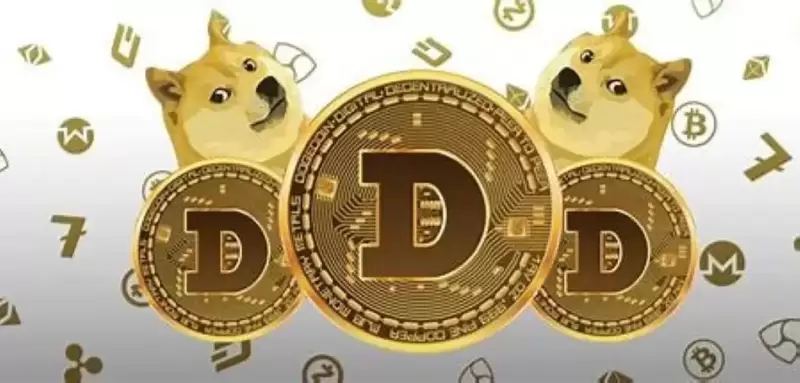 |
|
 |
|
 |
|
 |
|
 |
|
 |
|
 |
|
 |
|
 |
|
 |
|
 |
|
 |
|
 |
|
 |
|
 |
|
Cryptocurrency News Articles
Ethereum vs Ethereum Classic: Key Differences and Which One to Choose
Jan 20, 2025 at 06:03 pm

Ethereum and Ethereum Classic are two distinct blockchain platforms that share a common origin but have diverged significantly over time. Both platforms play crucial roles within the broader cryptocurrency ecosystem, and understanding their key differences is essential for anyone navigating this space.
A Brief History of Ethereum and Ethereum Classic
Ethereum was conceived by Vitalik Buterin in 2015 as a next-generation blockchain platform designed to support smart contracts and decentralized applications (dApps). It allows developers to build and deploy applications without relying on a central authority, using Ethereum’s native cryptocurrency, Ether (ETH), to power the network.
Ethereum Classic, on the other hand, emerged from a split in the Ethereum community following a hard-fork event in 2016. The fork was prompted by a major hack of the Decentralized Autonomous Organization (DAO), a smart contract-based venture capital fund built on Ethereum. Hackers exploited a vulnerability and drained around $50 million worth of Ether from the DAO.
In response, the Ethereum community voted to implement a hard fork to reverse the effects of the hack and return the stolen funds. However, a portion of the community disagreed with this move, believing that the blockchain should remain immutable, regardless of the hack. As a result, the Ethereum network split into two chains: the “new” Ethereum (ETH), which rolled back the hack, and Ethereum Classic (ETC), which kept the original chain intact and upheld the principle of immutability.
Key Differences Between Ethereum and Ethereum Classic
Despite their shared origin, Ethereum and Ethereum Classic have diverged significantly in terms of development, philosophy, and use cases. Here are some of the key differences that set them apart:
Philosophy and Consensus Mechanism: Ethereum and Ethereum Classic differ fundamentally in their approach to blockchain governance and consensus. Ethereum operates on a proof-of-work (PoW) consensus mechanism, which is energy-intensive and requires miners to solve complex mathematical puzzles to validate transactions and add new blocks to the chain.
In contrast, Ethereum Classic maintains the original Ethereum chain, which uses a proof-of-work consensus mechanism without any modifications. This divergence in consensus mechanisms has led to different approaches to blockchain governance and updates.
Development and Ecosystem: Ethereum has undergone continuous development and upgrades since its inception, driven by a large community of developers and contributors. It boasts a vast ecosystem of decentralized applications (dApps), non-fungible tokens (NFTs), decentralized finance (DeFi) protocols, and stablecoins, all built on the Ethereum blockchain.
On the other hand, Ethereum Classic has seen slower development and adoption, with a smaller ecosystem of dApps and other applications. However, it maintains the original Ethereum codebase and operates independently of the core Ethereum development team.
Performance and Adoption: Ethereum is the second-largest cryptocurrency by market capitalization and enjoys widespread adoption among developers, investors, and users. Its high network activity and congestion often lead to slower transaction speeds and higher gas fees during periods of peak demand.
Conversely, Ethereum Classic has lower network activity and adoption, resulting in faster transaction speeds and lower gas fees. However, its smaller ecosystem and lack of major DeFi or NFT applications limit its overall performance and use cases.
Security and Network Stability: Both Ethereum and Ethereum Classic are decentralized blockchain networks, which inherently provides a high level of security against external threats or manipulations. However, the immutability of the blockchain also means that any hacks or exploits, like the DAO hack, cannot be easily reversed.
Ethereum Classic, by maintaining the original Ethereum chain, carries the full history of the network, including the DAO hack. This immutability ensures that the network remains as it was at the time of the fork.
Which One Should You Choose: Ethereum or Ethereum Classic?
The choice between investing or developing on Ethereum or Ethereum Classic ultimately depends on your priorities as an investor or developer.
If you’re seeking a blockchain platform with a dominant market position, a thriving ecosystem, and continuous upgrades, Ethereum (ETH) might be a more suitable option. It offers a vast ecosystem of dApps, NFTs, DeFi protocols, and other applications, catering to a diverse range of use cases.
However, if you value the original Ethereum codebase, immutability, and a smaller network with faster transaction speeds, Ethereum Classic (ETC) could be a better fit. It maintains the original Ethereum chain, ensuring that the network remains as it was at the time of the fork.
Disclaimer:info@kdj.com
The information provided is not trading advice. kdj.com does not assume any responsibility for any investments made based on the information provided in this article. Cryptocurrencies are highly volatile and it is highly recommended that you invest with caution after thorough research!
If you believe that the content used on this website infringes your copyright, please contact us immediately (info@kdj.com) and we will delete it promptly.
-

-

-

-

-

- U.S. President dinner with $TRUMP token buyers attract Senators Fury
- Apr 26, 2025 at 02:30 pm
- The California and Massachusetts Democratic Senators sent a letter to the US Office of Government Ethics on Trump, asserting that the President has breached ethics by giving preferential treatment in $TRUMP coin investments to the people holding the top $TRUMP coin.
-

-

-

-





















![Trading is to follow [Review Video] Gold Bitcoin Crude Oil Orders Make Profits! Trading is to follow [Review Video] Gold Bitcoin Crude Oil Orders Make Profits!](/uploads/2025/04/26/cryptocurrencies-news/videos/trading-follow-review-video-gold-bitcoin-crude-oil-profits/image-1.webp)






































